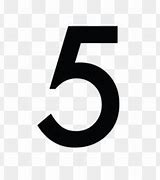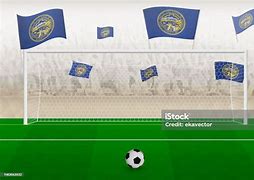
Tanda-Tanda Seseorang Memiliki Kemampuan Indigo
Anak indigo merupakan sebutan bagi seorang anak yang dipercaya punya kemampuan dan karakter yang berbeda dibandingkan dengan anak-anak seusianya. Selain itu, mereka juga sering dianggap memiliki kemampuan seperti halnya paranormal, misalnya saja dapat memprediksi masa depan atau melihat apa yang tak mampu dilihat oleh para orang biasa.
Tentunya, pola asuh anak yang diterapkan untuk anak dengan kondisi ini pun sangat berbeda. Secara fisik, anak indigo kemudian tidak berbeda dengan anak lainnya, tetapi ada tanda-tanda yang khas kalau seorang anak memiliki kemampuan indigo, antara lain:
Isaac Newton's classification of indigo as a spectral color
Isaac Newton introduced indigo as one of the seven base colors of his work. In the mid-1660s, when Newton bought a pair of prisms at a fair near Cambridge, the East India Company had begun importing indigo dye into England,[13] supplanting the homegrown woad as source of blue dye. In a pivotal experiment in the history of optics, the young Newton shone a narrow beam of sunlight through a prism to produce a rainbow-like band of colors on the wall. In describing this optical spectrum, Newton acknowledged that the spectrum had a continuum of colors, but named seven: "The originall or primary colours are Red, yellow, Green, Blew, & a violet purple; together with Orang, Indico, & an indefinite varietie of intermediate gradations."[14] He linked the seven prismatic colors to the seven notes of a western major scale,[15] as shown in his color wheel, with orange and indigo as the semitones. Having decided upon seven colors, he asked a friend to repeatedly divide up the spectrum that was projected from the prism onto the wall:
I desired a friend to draw with a pencil lines cross the image, or pillar of colours, where every one of the seven aforenamed colours was most full and brisk, and also where he judged the truest confines of them to be, whilst I held the paper so, that the said image might fall within a certain compass marked on it. And this I did, partly because my own eyes are not very critical in distinguishing colours, partly because another, to whom I had not communicated my thoughts about this matter, could have nothing but his eyes to determine his fancy in making those marks.[16]
Indigo is therefore counted as one of the traditional colors of the rainbow, the order of which is given by the mnemonics "Richard of York gave battle in vain" and Roy G. Biv. James Clerk Maxwell and Hermann von Helmholtz accepted indigo as an appropriate name for the color flanking violet in the spectrum.[17]
Later scientists concluded that Newton named the colors differently from current usage.[18][19] According to Gary Waldman, "A careful reading of Newton's work indicates that the color he called indigo, we would normally call blue; his blue is then what we would name blue-green or cyan."[20] If this is true, Newton's seven spectral colors would have been:
The human eye does not readily differentiate hues in the wavelengths between what are now called blue and violet. If this is where Newton meant indigo to lie, most individuals would have difficulty distinguishing indigo from its neighbors. According to Isaac Asimov, "It is customary to list indigo as a color lying between blue and violet, but it has never seemed to me that indigo is worth the dignity of being considered a separate color. To my eyes, it seems merely deep blue."[21]
In 1821, Abraham Werner published Werner's Nomenclature of Colours, where indigo, called indigo blue, is classified as a blue hue, and not listed among the violet hues. He writes that the color is composed of "Berlin blue, a little black, and a small portion of apple green," and indicating it is the color of blue copper ore, with Berlin blue being described as the color of a blue jay's wing, a hepatica flower, or a blue sapphire.[22]
According to an article, Definition of the Color Indigo published in Nature magazine in the late 1800s, Newton's use of the term "indigo" referred to a spectral color between blue and violet. However, the article states that Wilhelm von Bezold, in his treatise on color, disagreed with Newton's use of the term, on the basis that the pigment indigo was a darker hue than the spectral color; and furthermore, Professor Ogden Rood points out that indigo pigment corresponds to the cyan-blue region of the spectrum, lying between blue and green, although darker in hue. Rood considers that artificial ultramarine pigment is closer to the point of the spectrum described as "indigo", and proposed renaming that spectral point as "ultramarine". The article goes on to state that comparison of the pigments, both dry and wet, with Maxwell's discs and with the spectrum, that indigo is almost identical to Prussian blue, stating that it "certainly does not lie on the violet side of 'blue.'" When scraped, a lump of indigo pigment appears more violet, and if powdered or dissolved, becomes greenish.[23]
Mengamati lingkungan baru
Anak indigo ialah anak yang memiliki pengalaman ESP (Extra Sensory Perception) atau kemampuan indera keenam, beberapa kemampuan ESP yang dimiliki oleh anak indigo adalah apparitional phenomena, precognition, dan postcognition. Oleh karena itu, ketika sedang ada di lingkungan yang baru, maka anak indigo akan melakukan pengamatan terlebih dahulu. Lalu, jika lingkungan yang diamati dirasa baik, maka anak indigo kemudian akan merasa cocok dan nyaman.
Anak indigo sering kali mengungkapkan emosi secara lahiriah saat melihat sesuatu yang tak sesuai dengan jalan pikiran mereka. Namun, tak jarang anak indigo kemudian menutup diri dan diam karena merasa lingkungan tak memahami mereka.
Buku-Buku Terkait Arti Indigo
Berikut ini buku-buku terkait insting dan kaitannya dengan pikiran atau otak manusia yang bisa kamu dapatkan di Gramedia.
Tanda-Tanda Seseorang Memiliki Kemampuan Indigo
Anak indigo merupakan sebutan bagi seorang anak yang dipercaya punya kemampuan dan karakter yang berbeda dibandingkan dengan anak-anak seusianya. Selain itu, mereka juga sering dianggap memiliki kemampuan seperti halnya paranormal, misalnya saja dapat memprediksi masa depan atau melihat apa yang tak mampu dilihat oleh para orang biasa.
Tentunya, pola asuh anak yang diterapkan untuk anak dengan kondisi ini pun sangat berbeda. Secara fisik, anak indigo kemudian tidak berbeda dengan anak lainnya, tetapi ada tanda-tanda yang khas kalau seorang anak memiliki kemampuan indigo, antara lain:
Keajaiban Otak Kanan Karya Dr. Shigeo Haruyama
Tahukah Grameds bahwa otak memegang peranan yang sangat penting bagi kesehatan kita? Meskipun ilmu kedokteran telah ada sejak dahulu kala, ternyata penjelasan tentang otak sangat terlambat. Karena itu pernyataan “tidak akan berumur panjang apabila tidak menggunakan otak dengan baik” pasti sangat memancing rasa ingin tahu kita. Kepandaian menggunakan otak ternyata sangat berkaitan erat dengan kesehatan dan usia yang panjang. Hal-hal penting yang perlu kamu ketahui dalam buku ini ialah otak kanan memiliki hubungan yang erat dengan bakat seseorang, kamu bisa menggambarkan sesuatu di dalam kepala sebagai bentuk suatu latihan kegiatan apa pun. Otak kanan juga bisa diaktifkan dengan 4 hal sederhana, yaitu berpikir positif, berolahraga, meditasi, dan makan makanan bergizi.
Modern spectral classification
Several modern sources place indigo in the electromagnetic spectrum between 420 and 450 nanometers,[1][24][25] which lies on the short-wave side of color wheel (RGB) blue, towards (spectral) violet.
The correspondence of this definition with colors of actual indigo dyes, though, is disputed. Optical scientists Hardy and Perrin list indigo as between 445[26] and 464 nm wavelength,[27] which occupies a spectrum segment from roughly the color wheel (RGB) blue extending to the long-wave side, towards azure.
Other modern color scientists, such as Bohren and Clothiaux (2006), and J.W.G. Hunt (1980), divide the spectrum between violet and blue at about 450 nm, with no hue specifically named indigo.[28][29]
Towards the end of the 20th century, purple colors also became referred to as "indigo". In the 1980s, computer programmers Jim Gettys, Paul Ravelling, John C. Thomas and Jim Fulton produced a list of colors for the X Window Operating System. The color identified as "indigo" was not the color indigo (as generally understood at the time), but was actually a dark purple hue; the programmers assigned it the hex code #4B0082 . This collection of color names was somewhat arbitrary: Thomas used a box of 72 Crayola crayons as a standard, whereas Ravelling used color swabs from the now-defunct Sinclair Paints company, resulting in the color list for version X11 of the operating system containing fanciful color names such as "papaya whip", "blanched almond" and "peach puff". The database was also criticised for its many inconsistencies, such as "dark gray" being lighter than "gray", and for the color distribution being uneven, tending towards reds and greens at the expense of blues.[30]
In the 1990s, this list which came with version X11 became the basis of the HTML and CSS color rendition used in websites and web design. This resulted in the name "Indigo" being associated with purple and violet hues in web page design and graphic design. Physics author John Spacey writes on the website Simplicable that the X11 programmers did not have any background in color theory, and that as these names are used by web designers and graphic designers, the name indigo has since that time been strongly associated with purple or violet. Spacey writes, "As such, a few programmers accidentally repurposed a color name that was known to civilisations for thousands of years."[31]
The Crayola company released an indigo crayon in 1999, with the Crayola website using the hex code #4F49C6 to approximate the crayon color. The 2001 iron indigo crayon is portrayed using hex code #184FA1 . The 2004 indigo crayon color is depicted by #5D76CB , and the 2019 iridescent indigo is portrayed by #3C32CD .
Mengamati lingkungan baru
Anak indigo ialah anak yang memiliki pengalaman ESP (Extra Sensory Perception) atau kemampuan indera keenam, beberapa kemampuan ESP yang dimiliki oleh anak indigo adalah apparitional phenomena, precognition, dan postcognition. Oleh karena itu, ketika sedang ada di lingkungan yang baru, maka anak indigo akan melakukan pengamatan terlebih dahulu. Lalu, jika lingkungan yang diamati dirasa baik, maka anak indigo kemudian akan merasa cocok dan nyaman.
Anak indigo sering kali mengungkapkan emosi secara lahiriah saat melihat sesuatu yang tak sesuai dengan jalan pikiran mereka. Namun, tak jarang anak indigo kemudian menutup diri dan diam karena merasa lingkungan tak memahami mereka.
Mudah menangkap informasi meskipun belum pernah diajarkan sebelumnya
Kecerdasan atau IQ orang Indigo rata-rata di atas 120. Kelebihan mereka yang tak dimiliki orang biasa ialah kemampuan analisa data secara lebih cepat, luas dan kontinyu. Data-data yang tersebar dan acak ini kemudian akan dikumpulkan dan saling dihubungkan dengan cepat. Kemungkinan hal ini berhubungan dengan kapasitas dan kemampuan proses di otak yang lebih besar dibandingkan dengan orang biasa.
Kesulitan Bersosialisasi dengan Orang Lain
Apakah anak kemudian memiliki bakat untuk merasakan aura serta hal-hal yang tak dapat dilihat orang dewasa? Atau apakah anak kemudian merasa canggung secara sosial? Beberapa peneliti kemudian percaya bahwa telah terbentuk suatu konsep New Age mengenai anak indigo untuk dapat membingkai ulang “masalah” psikologis pada masa kanak-kanak, seperti ketergantungan pada teman khayalan.
Dengan demikian dapat dikatakan bahwa anak indigo akan dipandang memiliki kepribadian yang lebih positif serta unik, bukan masalah psikologis. Para peneliti di The Journal of Alternative and Emergent Religions kemudian mengatakan bahwa anak-anak indigo memiliki aura berwarna nila serta kemampuan spiritual yang unik. Anak-anak ini kemudian mengalami kesulitan untuk menyesuaikan diri dengan kondisi sosial serta sering di diagnosis dengan Attention Deficit Disorder.























